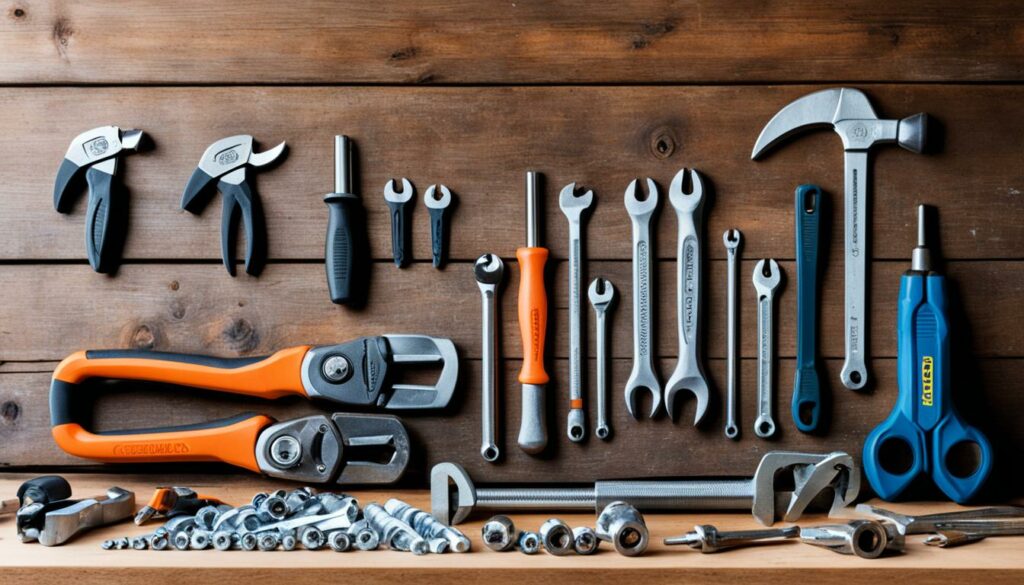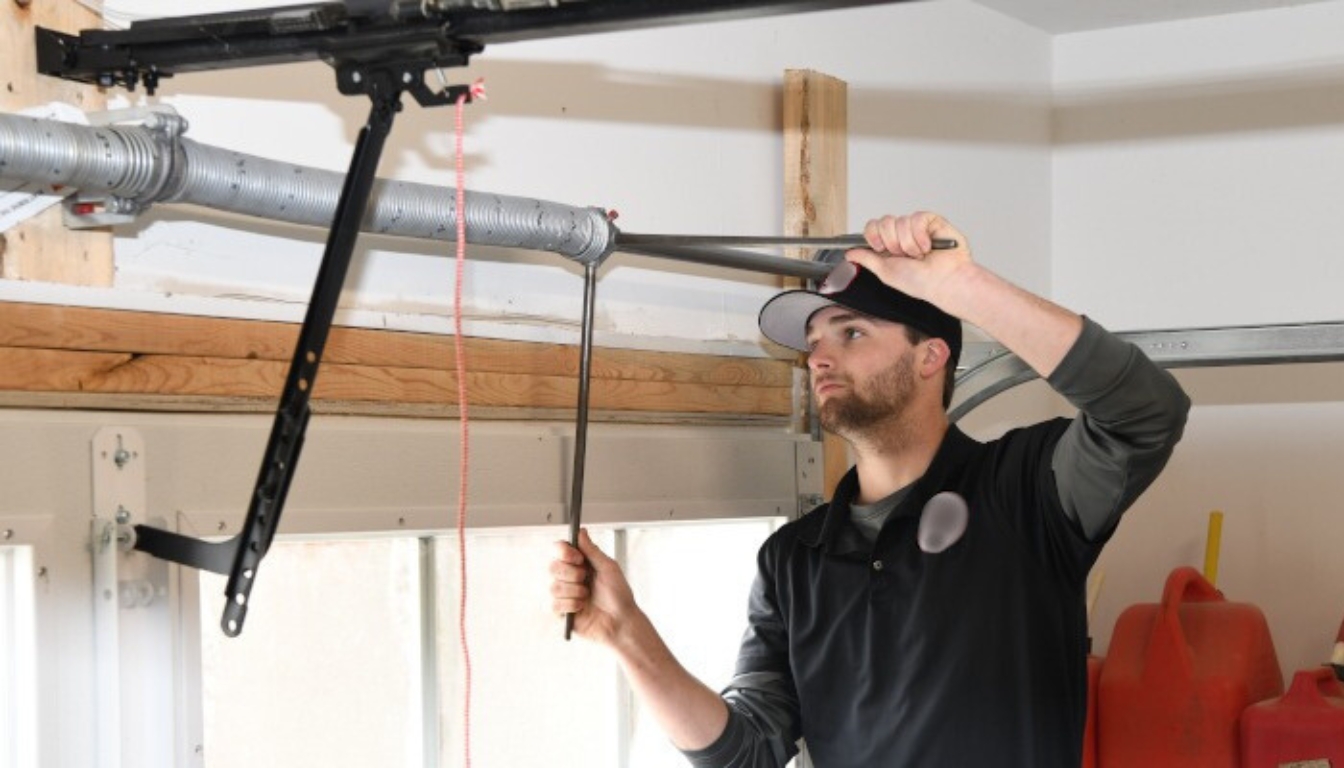Have you wondered about the varying costs to replace garage door springs?
In Australian homes, torsion springs make garage doors operate smoothly. To replace them, you need to find the spring code for your door’s size. It’s best to choose quality springs, like those made in New Zealand. These springs last up to 15 years because they’re made from strong materials.
Knowing the colors on springs is key—they show which side they fit on. Regular maintenance of your springs means a safer, smoother door.
Replacing the springs yourself could save you money, but it’s risky. These springs do heavy work, so fitting them right is critical for safety. That’s why getting a pro is a safer bet.
Key Takeaways
- Garage door torsion springs require accurate identification for proper replacement.
- New Zealand made torsion springs offer durability and longevity with a 15-year lifespan.
- Colour coding is vital to ensure correct spring placement and function.
- Regular maintenance is essential to maintain spring integrity and safety.
- DIY replacement can save cost but poses significant risks due to high tension.
A pro charges between $200 to $300 on average to replace springs. But some sources mention costs over $700. Choosing to do it yourself could save you a lot, but be careful. Use the right tools and follow expert guides. Remember, a mistake could mean having the wrong springs on your door.
For more information about how to replace garage door torsion springs, contact us for expert advice on garage door repairs in Deception Bay.
How Garage Door Torsion Springs Work
Garage door torsion springs are key for most garage doors. They carry the door’s weight. When a garage door opener triggers them, they lift the door smoothly. This is thanks to high-tension steel rods.
The springs are put above the door on a tube. This setup is vital for lifting. The high-tension steel rods make opening and closing easy. They also add stability and last longer, even in bad weather. Since these springs are under lots of tension, experts should replace them for safety.
It’s important to fit the new springs right. They must match the garage door’s size and be well balanced. While you can save money by doing it yourself, getting professional help is safer. This keeps the door working well and safely.
| Aspect | Details |
|---|---|
| Lifespan | Approximately 7 to 20 years, depending on type and usage |
| Cycle Rating | Typically around 10,000 cycles |
| Replacement Recommendations | Both springs at once for enhanced safety and longevity |
| Professional Cost | Between $200 and $300 for two springs |
| DIY Savings Claim | Up to $500; actual savings may vary |
| Incorrect Spring Rate | At least 10% of garage doors |
| Required Tools | Winding bars, ratchet set |
| Safety Precautions | Expert handling required due to high tension |
Why Garage Door Torsion Springs Break
Garage torsion springs help with the door weight bearing. They are under a lot of tension. This causes torsion spring wear and tear. These springs are made to last for about 10,000 cycles. This means they should work well for around seven years if you use the door four times a day. To keep your garage door opener working right, these springs wear out slowly. This means you’ll need regular garage door spring repair.
Not taking care of your springs can make them break. If you don’t oil them or if you stretch them too much, they won’t last long. Experts recommend using a silicone-based oil three to four times a year. This helps the springs work longer. It’s also good to check your door, especially in winter. That’s when many springs break. You want to make sure your door is balanced.
Checking your springs often can show if they’re getting old. If the coils are spaced out weirdly, it might mean the spring is stretching. This can lead to it breaking. A loud noise usually means a spring has suddenly broke. If you keep using the door after this, it could hurt the door or break the motor. This is why it’s important to fix it quickly and why you need a pro to do it.
The high tension in these springs can be dangerous. Springs can last a standard time or longer, depending on their cycle rating—10,000 or 20,000. Using better materials can make them last longer. Remember to oil them and check them with the seasons. This will help them last and save you money in the long run.
As time goes on, using your door a lot and friction can make the springs less effective. Looking after these springs helps them keep the door working well. This means less stress on the garage door opener. It keeps the whole door system working great.
| Maintenance Practice | Frequency | Benefit |
|---|---|---|
| Lubrication of Springs | 3–4 times a year | Reduces Friction and Increases Lifespan |
| Seasonal Balance Checks | Once a season | Prevents Uneven Wear and Detects Potential Failures |
| Visual Inspections | Regularly | Identifies Early Signs of Stretch or Damage |
Garage Door Spring Types
Knowing about garage door spring types is key for your garage door to work well. Torsion springs sit above the door, while extension springs go along the sides. This setup keeps your door moving smoothly.
Getting the size right for torsion springs is a must. You need the right dimensions for a good fit. Wholesale Garage in Australia has a chart to help. It matches the spring you need with your door size.
Let’s look at how garage door spring types differ:
| Spring Type | Placement | Common Use | Advantages |
|---|---|---|---|
| Torsion Springs | Above the door’s top frame | Sectional garage doors | Better for heavy doors, smoother operation |
| Extension Springs | Along the sides or upper track | Tilt garage doors | Cost-effective, easier to install |
The best garage door spring types depend on your door. Torsion springs are good for sectional doors. They’re strong and last longer. But for simpler doors, extension springs work great. They’re easier to set up and less costly.
While saving money by doing it yourself sounds good, getting a pro is safer. Handling these springs can be risky. So safety comes first. Measure your torsion springs carefully. It’s tricky but important for safety and good performance.
How Much Does Garage Door Spring Repair Cost?
The cost of garage door spring repair depends on many things. These include the door type, spring type, and labour costs. Knowing these costs helps owners decide on their garage door upkeep.
The garage door spring installation cost can change a lot. It depends on the door and spring needed. Normally, replacing garage door springs costs between $150 and $350. The average cost to fix a spring is about $250. Here is a closer look:
| Type of Spring / Service | Cost | Additional Information |
|---|---|---|
| Torsion Springs Replacement | $75 to $150 per spring | Lasts 8 to 15 years |
| Extension Springs Replacement | $50 to $100 each | Lasts 7 to 12 years |
| Service Call Labour Rates | $75 to $150 | Typical for professional repair |
| Materials for Spring Replacement | $30 to $200 for a set of two | Quality varies by brand |
| Commercial Garage Door Springs | $100 to $500 for springs, $150 to $300 for labour | Depends on door size and usage |
| Double Garage Door Springs | Additional $15 to $30 per spring | Compared to single door springs |
| Roll-Up Garage Door Springs | $200 to $250 | Varies by weight and usage |
| Cables Replacement | $75 to $200 | Essential for balanced operation |
The life of garage door springs varies. It depends on the type, from sectional to Colorbond doors. Things like material quality and upkeep habits matter. Springs usually last between 10,000 and 20,000 cycles. Better roller door springs quality means fewer breaks. This leads to lower costs over time.
Important Safety Considerations

Changing garage door torsion springs can be very risky. This is due to the high tension in the springs. Over 30,000 people get hurt each year from garage door accidents. Some garage doors are heavier than 400 lbs. Wearing the right safety gear, like safety glasses and strong gloves, is critical to avoid getting hurt.
It’s smart to hire a professional for garage door tasks. Trying to replace torsion springs by yourself can lead to serious injuries. These include losing limbs or getting badly hurt. An expert is the safest choice for fixing torsion springs. They know how to avoid dangers that you might not think of.
Professionals know how to stay safe while fixing garage doors. They always wear the right safety gear. Also, getting your garage door checked by them regularly is a good idea. They can oil moving parts, make sure everything is tight, and adjust springs. Doing these things can help your springs last longer, usually between 4-9 years.
Following the maker’s guide closely is very important. If you make a mistake with the torsion spring’s anchor bolt, it could be very dangerous. The spring could let go of all its tension at once. This could send things flying very fast, which is really unsafe.
Remember, garage door springs usually last for about 10,000 times of opening and closing. While stronger springs can last even longer, the right setup and care matter a lot. If you’re not sure about something, it’s best to call a pro. They can make sure everything is safe, which helps avoid hurting people or damaging things.
Broken Garage Door Spring Repair Tips
If you have a broken garage door torsion spring, act quickly to avoid more damage. Don’t use the door until it’s fixed. You can often spot a broken spring by looking. For some doors, the spring is above the door panels. For tilt doors, it’s along the side to the hinge arms. Roller door springs are inside a case and break less but still need checks.
To check your torsion spring, inspect it regularly for rust, make sure it’s well-oiled, and has the right tension. To adjust the tension, disconnect the door from its motor and try lifting it. If the door stays up at chest height by itself, the tension is good.
Here’s how you keep your garage door in good shape:
- Check your springs often for signs of damage or wear.
- Use your door manually now and then to make sure it works smoothly without the motor.
- Ensure your springs are well-lubricated and free from rust to make them last longer.
- If a spring breaks, get a pro for broken garage door spring repair and replacement right away.
If you want to fix it yourself, make sure you have the right tools and follow the right steps. Here are some key tips:
| Step | Description | Tools Required |
|---|---|---|
| 1. Identify Wire Size | Count 20 coils of the broken spring to figure out the wire size. | Measurement Tape |
| 2. Loosen Anchor Bracket | Use two 9/16″ wrenches to loosen the bolts on the springs’ anchor bracket. | Two 9/16″ Wrenches |
| 3. Wind New Springs | Turn the springs 1/4 turn for every 3″ of door height. A 7′ door needs 28 1/4 turns. | Winding Bars |
| 4. Secure Set Screws | Tighten the set screws to keep the new springs in place. | Allen Wrench |
| 5. Test the Door | Open and close the door a few times to check the tension and operation is right. | Physical Effort |
By following these steps, you’ll repair your door safely and effectively. Plus, you’ll make your door system last longer. Remember, keeping up with maintenance and checks helps you avoid big repairs and keeps your door working well.
Tools Required for your Garage Door Repair
Fixing your garage door’s torsion spring needs the right tools. It’s important for safety and efficiency. The most important tool is the winding bar. It adjusts the tension of the springs. Also, make sure to have good lubrication for the chain drives, tracks, and wheels. This keeps everything running smoothly.

You’ll also need specialized wrenches for tightening bolts, screws, and connectors. It’s important to have measuring tools too. They help check spring tension and how far the garage door opener moves. Having all these tools ready makes repairs easier. It also keeps your garage door working well for longer.
Below is a detailed list of the essential tools:
- Winding Bars
- Lubricants for chain drives and tracks
- Specialized Wrenches
- Measuring Devices
Here’s a detailed comparison of what these tools do:
| Tool | Function |
|---|---|
| Winding Bars | Adjust the tension of torsion springs |
| Lubricants | Maintain smooth operation of chain drives, tracks, and wheels |
| Specialized Wrenches | Tighten door bolts, screws, and connectors |
| Measuring Devices | Gauge spring tension and opener travel limits |
How to Measure for Your Replacement Torsion Springs
Getting the right garage door torsion spring measurement is crucial. Start by finding out the height and width of your garage door. Use these to match with a spring code through a torsion spring chart. This helps pick the right replacement torsion springs for sectional doors.
There’s a challenge due to 30% of makers mixing wire sizes. To get it right, measure the wire size over 10 or 20 coils. Use a chart that rounds to the nearest 16th inch.
Technicians say to avoid calipers for measuring. They might bend the wire. A chart can be more accurate and extend spring life by matching sizes properly.
For standard doors with 4″ drums, add eight coils to springs for seven-foot doors. For eight-foot doors, add nine coils. This is key for measuring springs and choosing the right one.
| Spring Code | Height (mm) | Width (mm) | Springs Included |
|---|---|---|---|
| Code 2 | 1920 – 2180 | 3001 – 3200 | 1x |
| Code 3 | 1920 – 2180 | 3201 – 3400 | 2x |
| Code 4 | 2181 – 2440 | 3001 – 3200 | 2x |
| Code 5 | 2181 – 2440 | 3201 – 3400 | 2x |
Old wire sizes like .200 and .237 are out. Calculate replacements using adjacent sizes on the chart. Spring length grows by one coil per tension turn.
Measure springs to the nearest quarter-inch. Keep your fingers away from springs and cones. Following these steps ensures a successful replacement and longer spring life.
Step-by-Step Guide to Replacing Your Garage Door Springs
Start by wearing the right safety gear like glasses and gloves. Make sure the work area is free from things that could cause trips. Unhook the door from the opener and use bars to safely let out spring tension.
Next, take off the broken springs. Make sure to get new ones that match well. You’ll need to wind them carefully to make them tight enough, usually adding a bit for each foot of door height.
Now, hook the door back to the opener. Check that the door lines up right and that all safety bits work. You might need to tweak the opener settings to work well with the new springs. Paying attention to detail here is key for a safe DIY job.
Fixing it yourself can be cheaper than hiring someone. You could save up to hundreds, as pros charge between $200 to $300, sometimes more. But remember, working with springs can be dangerous. If you’re not sure, it might be safer to call a pro.
Garage Door Spring Repair Near You
For any assistance with garage door spring repairs, don’t hesitate to reach out to Jarred at Impact Doors. Our expert team is ready to help you with all your garage door needs. Contact us today at (07) 5451 4022 to schedule a service or get a free consultation. Your garage door’s optimal performance and safety are our top priorities!

